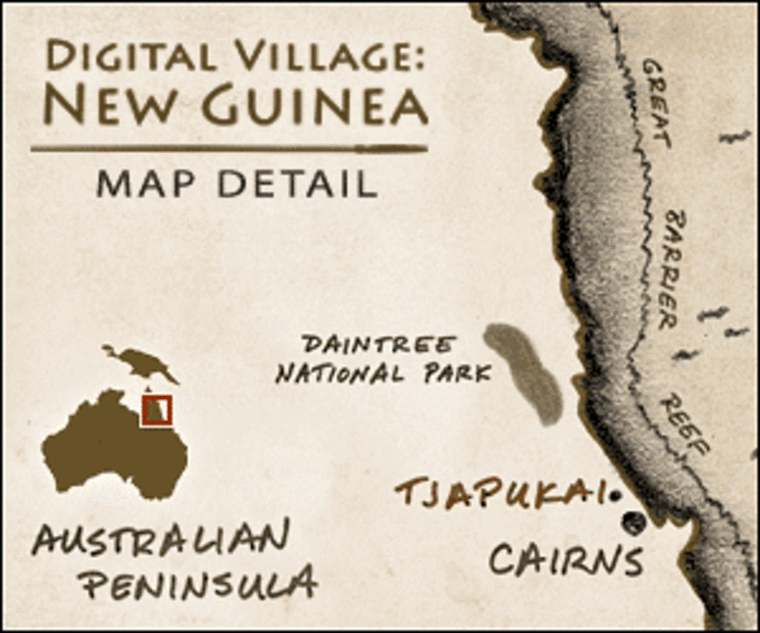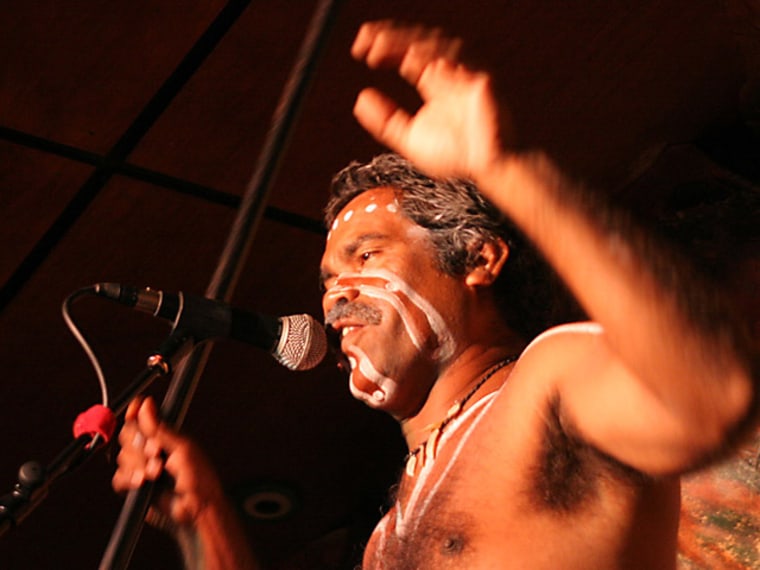In 1540 Garcia López de Cárdenas, the first European to peer down into the Grand Canyon of the Colorado, turned away from the spectacle, and declared it an “ugly defile.” The Mursi women of Southern Ethiopia cut their lips at a young age, and insert plates of clay; by adulthood the women with the largest lip plates are considered the most attractive. In the Indonesian Archipelago when the tropical sunset blazes across the sea the Balinese look the other way, gazing inland to the volcanoes for splendor.
Beauty is indeed in the eye of the beholder, and just as language and its intrinsic limitations and nuances shape perception, what our eyes see in context of culture influences our sense of wonder, of art, of awe.
While none of us on this expedition is a qualified anthropologist, we each conjecture how our sense of beauty has evolved, and how it is different from those immersed in vastly different settings and societies. Hence we have set out on this quest for the Digital Village, which is very much a misnomer, as we are actually seeking the Un-digital Village, a place where the inhabitants have had no exposure to the digital world… a place where software is freshly cut arsegrass, a hard drive is a steep hike to the next valley, and bits and bytes have entirely different, more basic meanings.

Deep in the farthest reaches of the New Guinea highlands, where tribes have been separated from the leveling influence of the outside world for millennia, we hope to find a place where the villagers have yet to create or see a digital image. We hope to hand over a set of HP Photosmart digital cameras and let our hosts showcase the world as they see it, to electronically illustrate their magic. Perhaps we will each learn something in the process.
Quest for the ancestors
We begin our quest with a visit to Australia, to the Tjapukai Aboriginal Culture Park just outside of Cairns. This may be more appropriate than in sounds, for in the last five years paleo-anthropologists have used DNA sampling to determine that the Aborigines and the New Guinea Highlanders were part of the same migration that came out of Africa, crossed Asia, and sailed across several channels on bamboo rafts some 50,000 years ago to populate these far lands. To put that in perspective, the oldest human remains in the Americas are currently thought to be about 17,000 years old.
An Ice Age that sequestered ocean water in continental ice sheets set the sea 3,000 feet lower then, and New Guinea and Australia were part of a single continent. But 8,000 years ago the seas rose, New Guinea and Australia became separated by the Torres Strait, and the founding populations began their separate evolution and fate.
Still, it wasn’t until the 18th century when the European colonialists arrived that their destinies began to radically diverge. Australia was ideal for imperialistic sensibilities — it was largely flat and temperate, imported livestock prospered, staple European crops took hold. The British Empire’s settlement was organized, aggressive, and armed, and it took over the island continent, reducing the population of the native non-literate nomads by 80%.
By the 1920s the Aboriginals were nearly wiped out, their numbers diminished to about 60,000. It was only in 1967 that they were even counted in the census and allowed to vote. Their culture was broken, unemployment was near total, their self-esteem sunk down under, and many turned to drink and violence, exacerbating the perceptions of non-indigenous Australians.
The wizards of Oz
But 18 years ago an off-Broadway producer and his dancer wife, Don and Judy Freeman, set up a community theater operation in a basement in Kuranda, a sort of “Waiting for Guffman” performance piece that featured seven Aborigines celebrating their heritage, their Dreamtime, their distinctive music, art and language that were on the verge of extinction. It took off, and in 1996 the local tribal councils became majority shareholders in a 25-acre cultural park, restaurant (the Boomerang Buffet, where you can always come back for more) and theater show that has become a world standard for indigenous tourism.
It now operates seven nights a week, year round, and brings in about 160 thousand visitors per annum. The audience often first learns about Aborigines and their bloody history and wrecked dreams, about their walkabouts, songlines, and rich legends and traditions through this performance. The park is the largest private employer of Aborigines in Australia, and serves as a vehicle for honoring a nascent multiculturalism.
And it is anything but unplugged. The Aborigines have embraced 21st century technology to celebrate their past, have used it to create entertainment, edification and art, to bring economic prosperity to their community, and to rouse a generation of their own.
The centerpiece is a multi-media telling of the Aborigine Creation myth in a climate-controlled 200-seat theater, with a combination of live-action with a front projection video crammed with digital effects, such as holographic fire, flying spirits, and a giant crocodile biting off a man’s leg. It is exhibited with a laser disc player, under a light show managed by an AMX digital system. Behind the scenes two NT servers, a dozen workstations, and 5 laptops loaded with Windows XP keep the operations going. The staff communicates with digital hand-held radios; time is kept on digital clocks; and the lead performer, Warren Clements, applies his ochre and chalk makeup while listening to Guns & Roses on his iPod. The audience listens to the show through headsets that transmit in eight languages, all stored on a hard drive.
Technology in service of paradox
And, of course, the theater is packed with visitors posing their digital cameras a couple feet or so above their laps capturing scenes from the shows. With a high-speed Internet connection Michael Nelson, the marketing manger, promotes the messages of the park to the world, enticing more to come and appreciate a culture almost lost to dispossession and time.
“Tjapuka has done more for reconciliation than any Canberra committee meeting,” Michael proclaims as a group of pre-teen Aborigines file in to see the show, a generation that for the first time has indigenous studies in school – a generation that just may return the pride.
“We’re not savages,” Warren Clements decrees after the show, still adorned in what might pass to the uninitiated as war paint. The paradox is not lost on him that his access to the modern world comes from romantic presentations of his people’s past primitiveness. “We’re doing this to break down the barriers of discrimination; to give visitors a better understanding of who we are; to give our own a path back to self-respect and dignity.”

On the way out, which like all smart theme parks feeds through the gift shop, we buy a digital CD of didgeridoo (the oldest wind instrument in the world) and another of the players singing the park’s theme song, “Proud to be Aborigine.” The melodiously uplifting and catchy tune almost drowns the stinging lyrics, such as the lines, “The white man came and pulled it (Australia) down under,” and “Spears can’t fight guns and dynamite.”
So in some sense, ours is a journey of devolution, dialing backwards from the modern Aborigines to their early ancestors in New Guinea. There, across the Torres Strait, precipitous terrain, impenetrable jungles, brutal climate and tropical diseases kept the colonialists at bay. And today large populations, descendents of the original migrations, still live as they have for thousands of years, using hafted stone tools, gathering food and clothing from the rainforest, living an ancient analog life.
Great Escapes is exploring Papua New Guinea in search of the Digital Village, filing daily dispatches along the way. If you have a question or comment, mail us at greatescapes@msnbc.com.